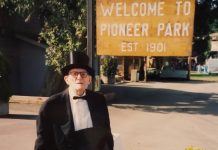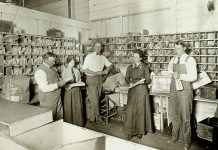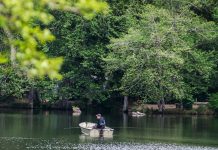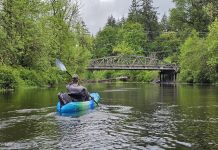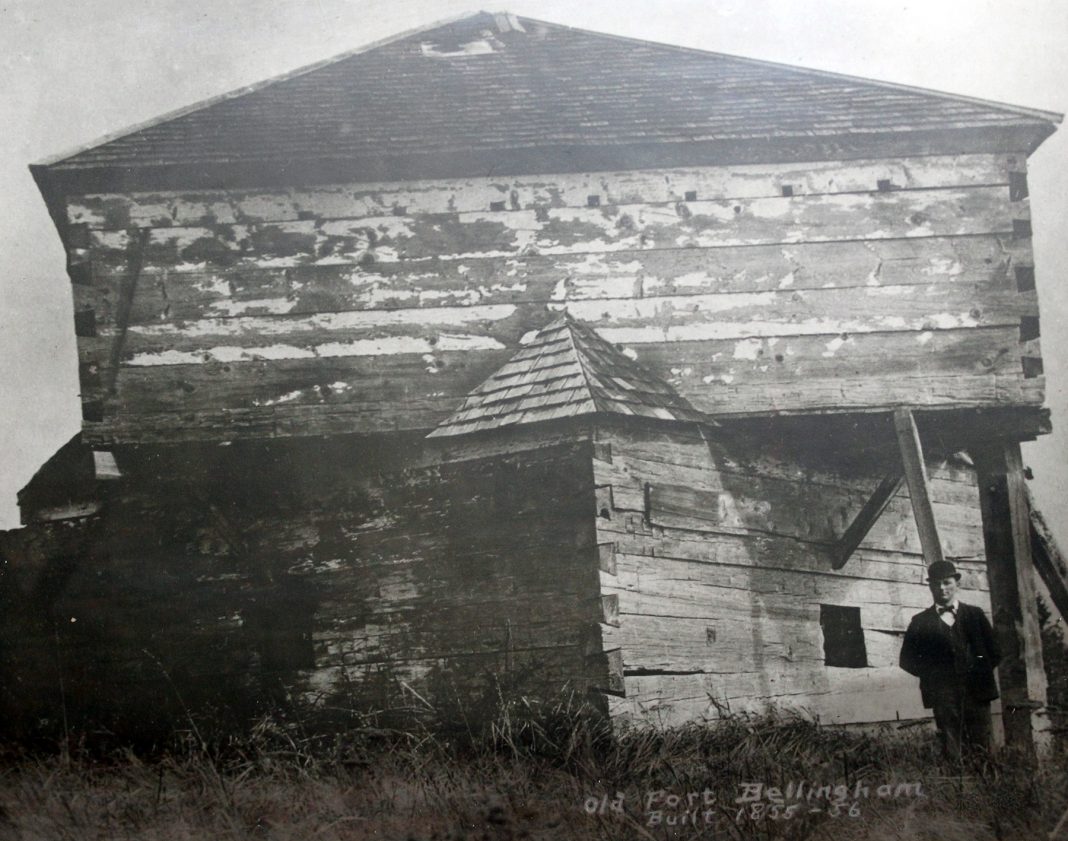In the first two centuries since its settlement, Whatcom County has had military installations linked to two major chapters of American history: the Civil War and the Cold War. While these military sites no longer exist as such, we still see traces of them today.
Nineteenth-century Fort Bellingham began when Bellingham, Whatcom, Sehome, and Fairhaven were separate towns in Washington Territory. Now it’s a private lot overlooking Bellingham Bay, but Pickett House Museum tells its story three miles southeast. Twentieth-century Blaine Air Force Station, one of several coastline defenses, endures through living memory and Bay Horizon Park, one mile from Birch Bay’s waterfront. These inconspicuous sites’ histories lie in wait for rediscovery.
Fort Bellingham
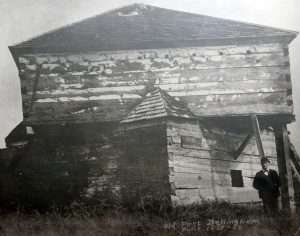
Captain George E. Pickett and 68 men of Company D, Ninth Infantry established Fort Bellingham in 1856. The U.S. Army dispatched them to prevent Haida raids. Buildings included headquarters, barracks, officers’ mess, stables, two blockhouses, and a cemetery.
In 1859, the Pig War prompted the southwest blockhouse’s dismantlement and reconstruction at San Juan Island’s American Camp. Vacated in 1860, Fort Bellingham’s northeast blockhouse burned in 1897.
Daughters of the Pioneers of Washington, Whatcom Chapter 5 President, Edradine Hovde, summarizes Fort Bellingham’s remains as “only a few little spots of concrete or cornerstones.” Pickett House displays part of Fort Bellingham’s 100 foot flagpole, which the Ladies’ Co-Operative Society re-erected in Elizabeth Park in 1903. American Camp includes Fort Bellingham’s original “planks sawn at the Roeder-Peabody mill,” says Hovde.
Hovde says “either John or Russell Peabody” built Pickett House in 1856 and Pickett lived there only in 1857. His wife, Morning Mist, a Haida woman, died following the birth of James “Jimmy” Pickett—later a famous artist. George Pickett “returned to Virginia for bereavement” until the Pig War. He left Washington permanently in 1861, becoming a Confederate Army general remembered for “Pickett’s Charge.”
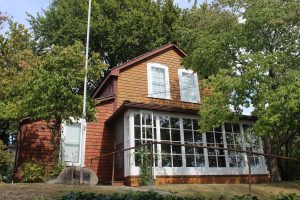
The Daughters established Pickett House Museum in 1941. Notable owners of the house have included a superintendent of schools, a judge, and Hattie Strother with her family and “Aunt Mary, who was a freeborn black. So each one of those has significance living here in this house, in their backgrounds and their cultures,” says Hovde. “It wasn’t just one later-Confederate soldier.”
Indeed, Pickett House’s multicultural history has profoundly impacted the community.
“I think that those who are interested in history are very proud that we have the oldest wooden structure on its original site that’s been documented in the state of Washington,” says Hovde, adding that nearby T.G. Richards Building (circa 1858) remains Washington’s “first brick building.”
Blaine Air Force Station
The Air Force’s first foothold in Whatcom County was its 1941-1946 commandeering of Bellingham International Airport, whose public opening coincided with the December 7, 1941, Pearl Harbor attacks. The Korean War prompted the 1951 construction of Blaine Air Force Station. Here, the 757th Radar Squadron monitored the skies for hostile aircraft until the station’s 1979 closure.
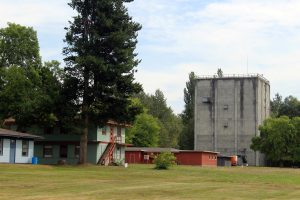
Lions Club – Camp Horizon, a camp for developmentally disabled adults, has occupied Bay Horizon Park beside a public playground since 1986. The radars and operation center are gone. However, Camp Horizon repurposes the orderly room, barracks, mess hall, bachelor officer’s quarters, motor pool, and gym.
Air Force veteran Rick Chinn, stationed 1969-1970 in the GATR (Ground Air Transmitter Receiver) site, runs a website documenting the buildings’ status. Chinn describes his previous station, California’s Point Arena AFS, as geographically isolated and now “crumbling” –unlike Blaine AFS’ accessibility and preservation.
“A lot of us considered it one of the best-kept secrets of the Air Force,” says Chinn. “Compared to other radar sites, it was a resort.”
Blaine AFS veterans reunite annually and help maintain Camp Horizon. While Birch Bay residents may remember the radars’ technological interference, Chinn says, Blaine AFS’ public reception was “probably more positive than other radar stations in the country, simply because it was located so close to civilization.”
Remembering Whatcom County’s Military History
Whatcom County residents can help keep these sites’ histories alive.
Small museums like Pickett House rely on donations, volunteers, and docents to survive. For those interested in nineteenth-century Whatcom County history, Hovde recommends reading The Fourth Corner by Leelah Jackson Edson and visiting Lynden Pioneer Museum and Ferndale’s Pioneer Park.
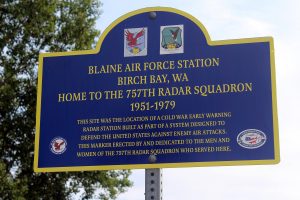
“I think people need to know about their history so that they can learn from it,” says Hovde, adding, “if you know what your lineage is, be it a town or an individual, then you have pride of place, you know where you come from, you know where you belong.”
Supporting Camp Horizon and Bay Horizon Park will keep Blaine AFS’ buildings in use. Chinn recommends Radomes.org for those interested in Air Force stations.
“I think the importance is just the public benefit of a public space that somebody isn’t trying to develop into something commercial,” says Chinn. “We need these open spaces, and the former radar station’s a good place to do it.”
As these military installations show, stewardship breathes new life into history. Structures may disintegrate, but legacies do not.
Pickett House Museum
910 Bancroft Street in Bellingham
360-778-8300
Lions Camp Horizon
7506 Gemini Street in Blaine
360-371-0531









